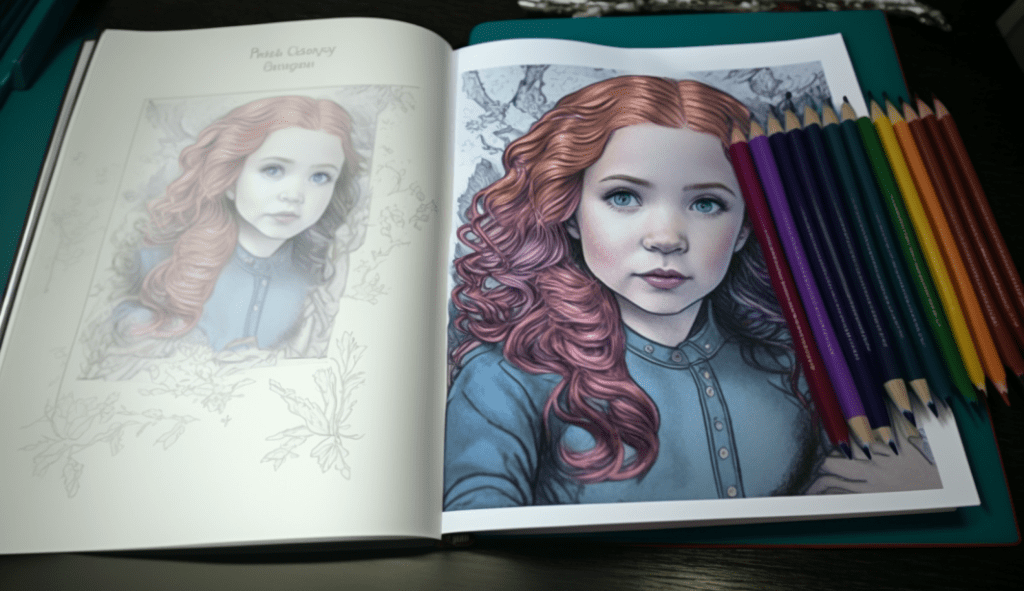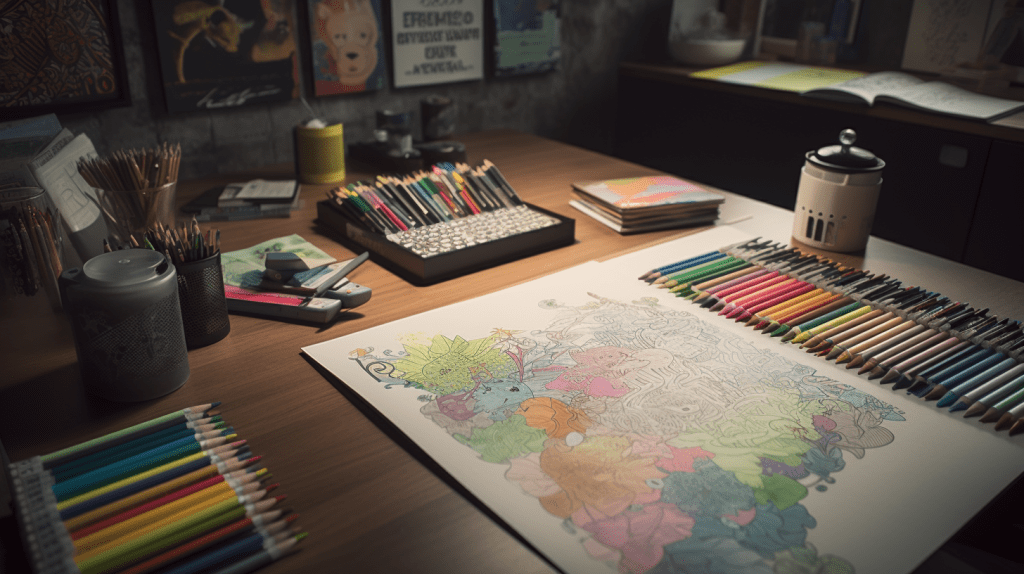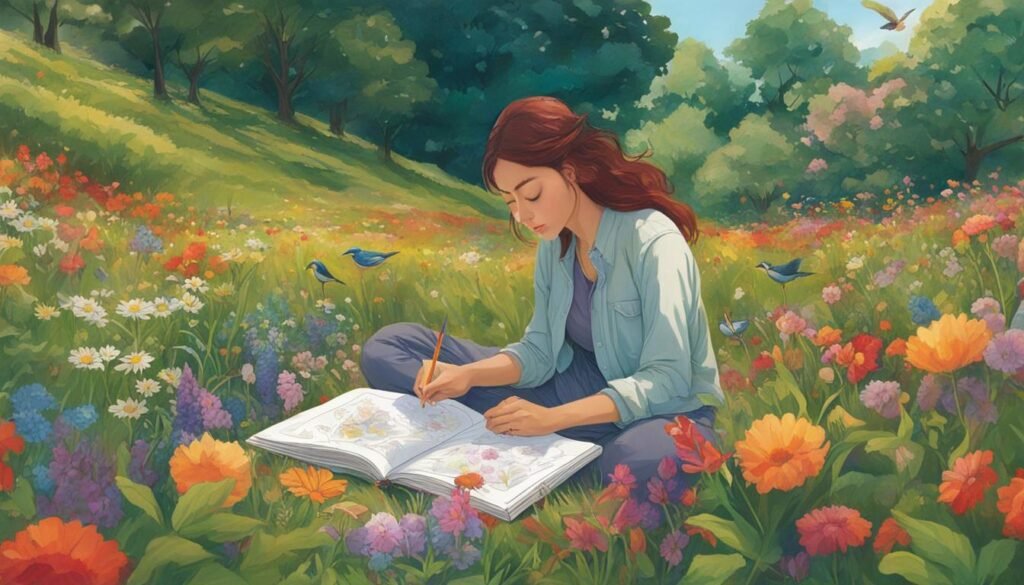Coloring books are an excellent way for children to express themselves creatively while developing important skills such as hand-eye coordination and fine motor skills. However, with so many different coloring books available on the market, it can be challenging to find the perfect one for your child. In this article, we will discuss some tips for choosing the perfect coloring book for your child.

Consider your child’s interests
The first and most important thing to consider when choosing a coloring book for your child is their interests. Think about what your child enjoys doing and what they are passionate about. For example, if your child loves animals, consider getting them a coloring book filled with animal-themed pictures. If they enjoy sports, a coloring book featuring their favorite sports might be the perfect choice.
Choose age-appropriate coloring books
It is essential to choose coloring books that are appropriate for your child’s age. Younger children will enjoy simple pictures with large spaces to color, while older children will be able to handle more intricate designs. Choosing an age-appropriate coloring book will ensure that your child is both challenged and engaged while coloring.
Look for educational value
Coloring books can also provide educational value for children. Look for books that feature educational themes such as alphabet letters, numbers, shapes, and animals. These types of coloring books will not only help your child learn while having fun but also encourage their curiosity and creativity.
Choose high-quality paper
When choosing a coloring book for your child, it is essential to consider the quality of the paper. Poor-quality paper can easily tear or bleed, which can be frustrating for both you and your child. Look for coloring books with high-quality paper that will not smudge or bleed when colored.
Consider the book’s size
The size of the coloring book is also an important factor to consider. If your child enjoys coloring on the go, choose a smaller-sized book that can easily fit in their bag or backpack. However, if your child prefers to color at home, a larger book may be a better choice as it will provide more space for them to work.
Choose coloring books with different themes
It’s a good idea to choose coloring books with different themes to keep your child engaged and interested. For example, you can choose books with themes like holidays, seasons, or different cultures. This variety will keep your child interested and engaged while also providing them with new and exciting coloring opportunities.
Consider the level of detail
The level of detail in coloring books can vary greatly. Some books feature simple, bold lines, while others have intricate designs that require more precision and patience. Consider your child’s skill level and attention span when choosing a book with a suitable level of detail.
Check reviews and recommendations
Before purchasing a coloring book, take some time to read reviews and recommendations from other parents or teachers. These reviews can provide valuable insight into the book’s quality, educational value, and suitability for your child’s age and interests.
Avoid books with copyrighted characters
While your child may love a coloring book with their favorite cartoon or movie characters, it’s important to avoid books that feature copyrighted characters. These books may not be of the best quality, and they could potentially infringe on copyright laws.
Consider your budget
Lastly, consider your budget when choosing a coloring book for your child. While some coloring books can be expensive, there are many affordable options available that still offer high-quality paper and engaging designs. You can find budget-friendly options at your local bookstore, toy store, or online retailer. Keep in mind that expensive coloring books may not necessarily be better than more affordable ones, so don’t feel like you have to break the bank to find a great book for your child.
In addition to considering your budget, it’s also important to keep in mind that some coloring books come with additional materials such as stickers or markers, which can add to the cost. While these extras can be fun, they may not be necessary and can drive up the price of the book. Consider whether these additional materials are worth the extra cost or if you would prefer to buy a standalone coloring book.
By taking into account your child’s interests, age, educational value, paper quality, size, level of detail, and budget, you can choose a coloring book that your child will enjoy and benefit from. Remember to check reviews and recommendations before making a purchase and to avoid books with copyrighted characters. With so many options available, finding the perfect coloring book for your child can be a fun and rewarding experience for both you and your child.
n conclusion, choosing the perfect coloring book for your child can be a daunting task, but by considering their interests, age-appropriateness, educational value, paper quality, size, level of detail, and budget, you can find a book that your child will love. Remember to also check reviews and recommendations before making a purchase and to avoid books with copyrighted characters.
Frequently Asked Questions
What are some tips for choosing the right coloring book?
Consider your personal interests and preferences when choosing a coloring book, and look for designs that match your skill level. Think about the type of coloring tools you prefer to use, and make sure the paper quality can handle them. Also, read reviews and preview the book’s content before purchasing.
What are some popular themes for adult coloring books?
Popular themes for adult coloring books include nature, animals, mandalas, abstract designs, and inspirational quotes. There are also many books featuring popular culture themes, such as Harry Potter, Game of Thrones, and Disney characters.
How can I tell if a coloring book is appropriate for my skill level?
Check the level of detail and complexity in the designs, as well as the recommended age range or skill level indicated by the publisher. Look for books that offer a range of designs, from simple to more intricate, so that you can choose what suits your level of expertise.






